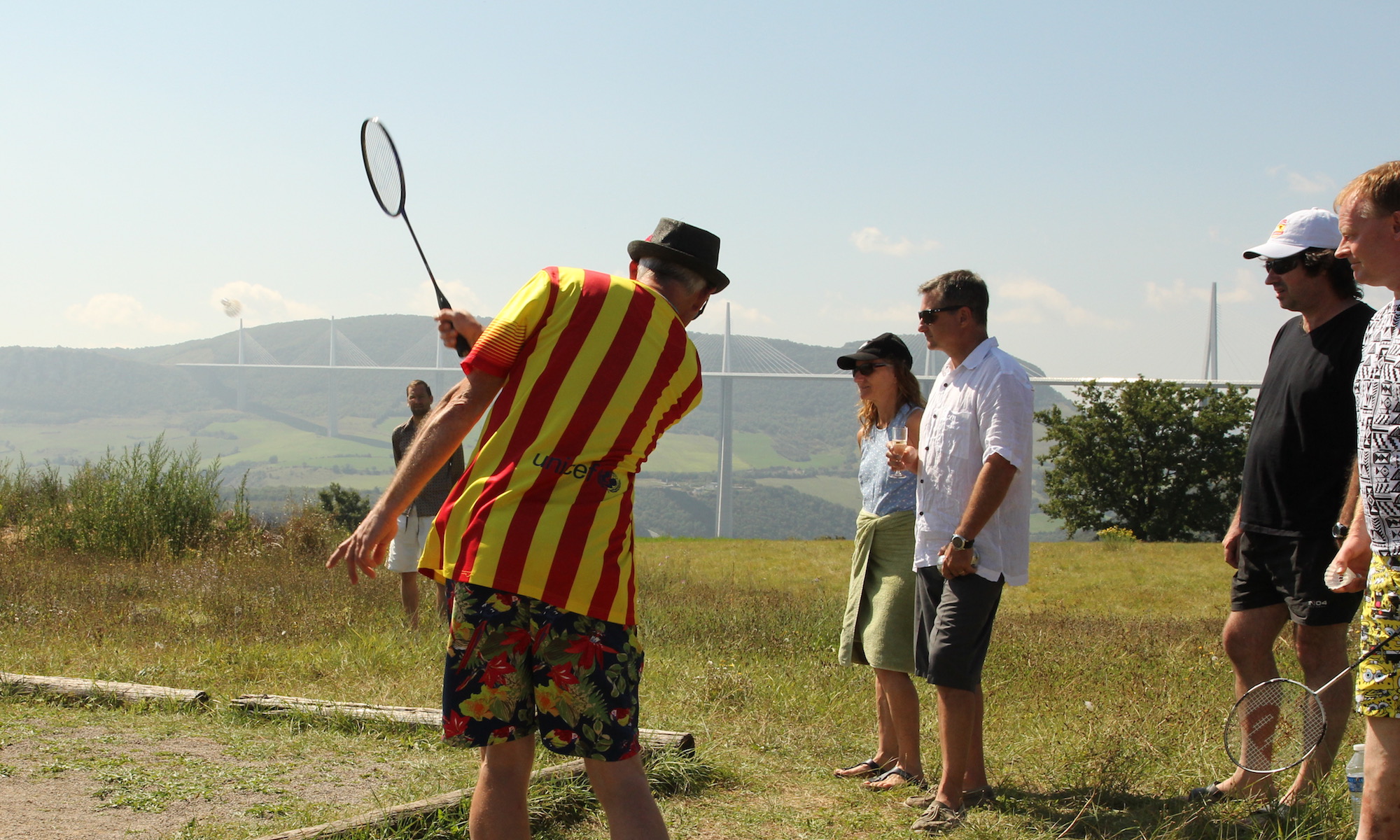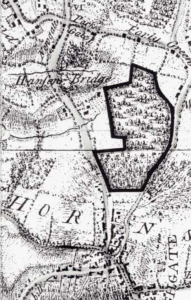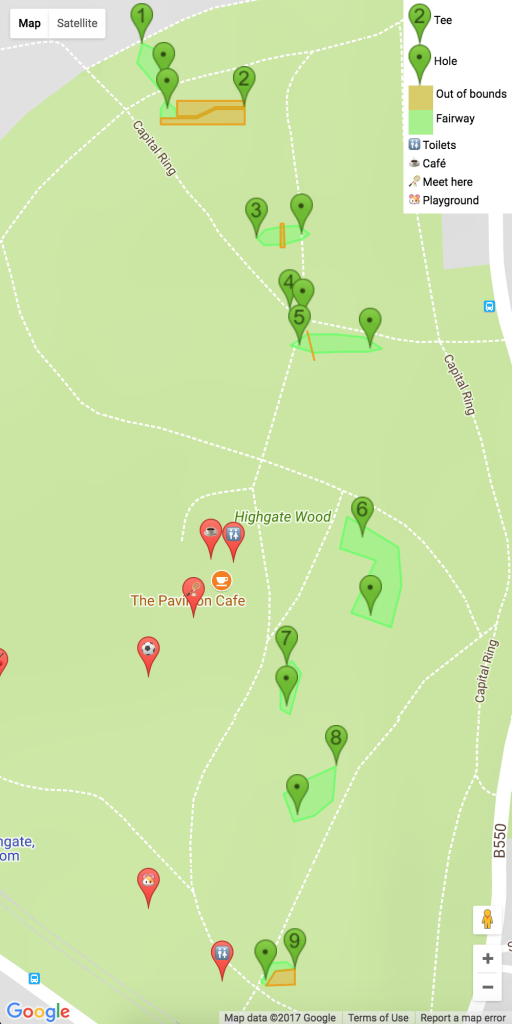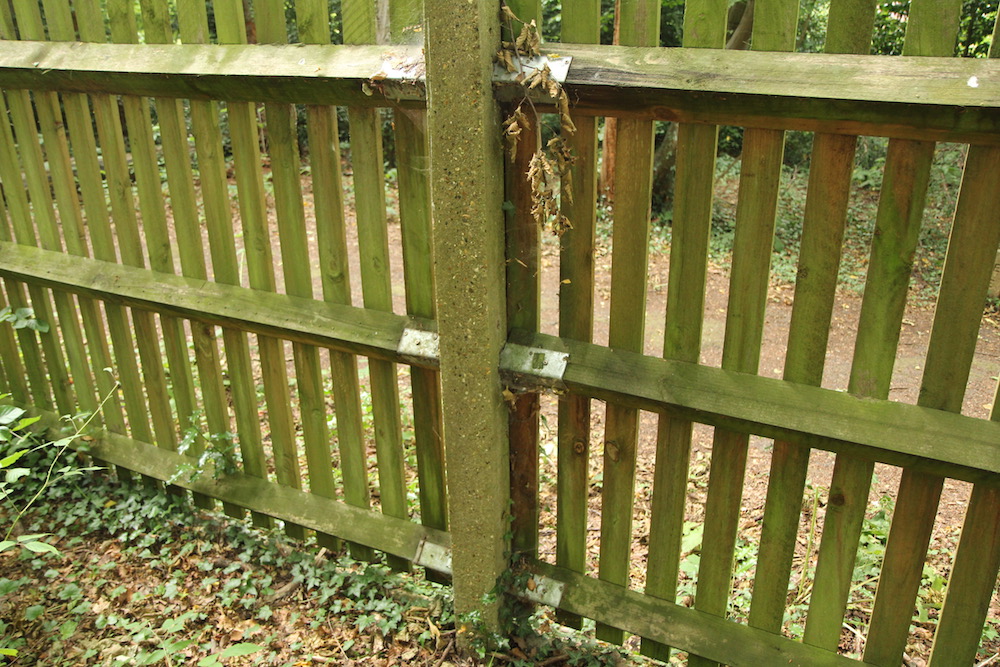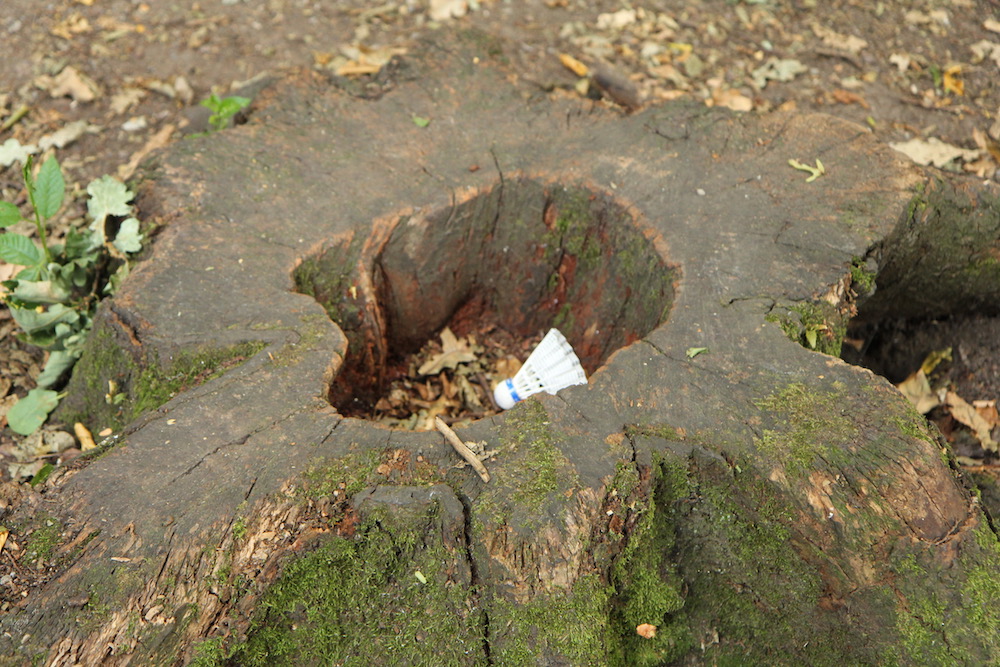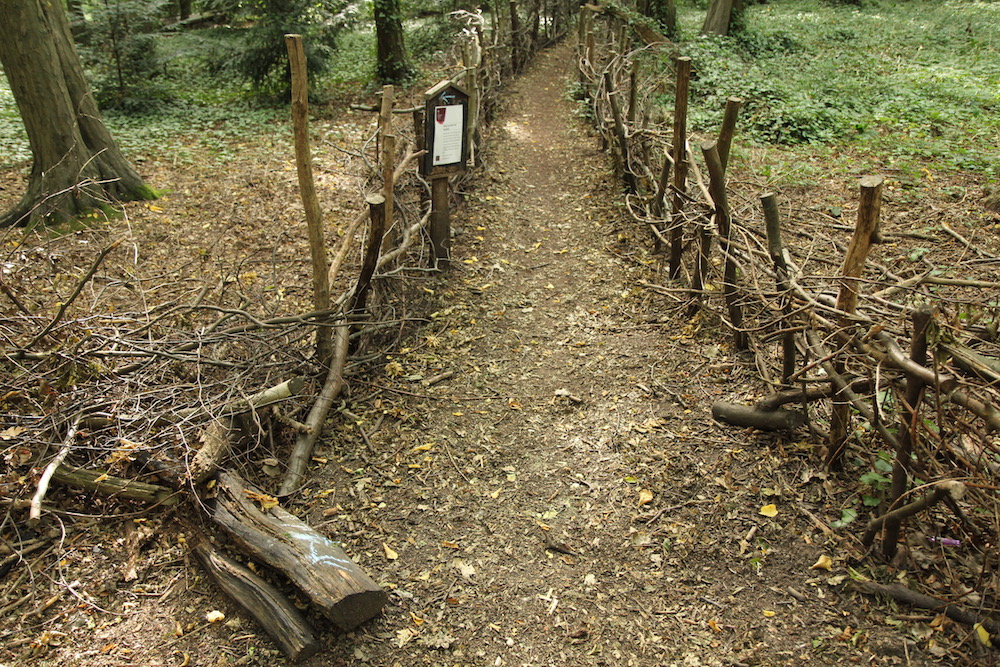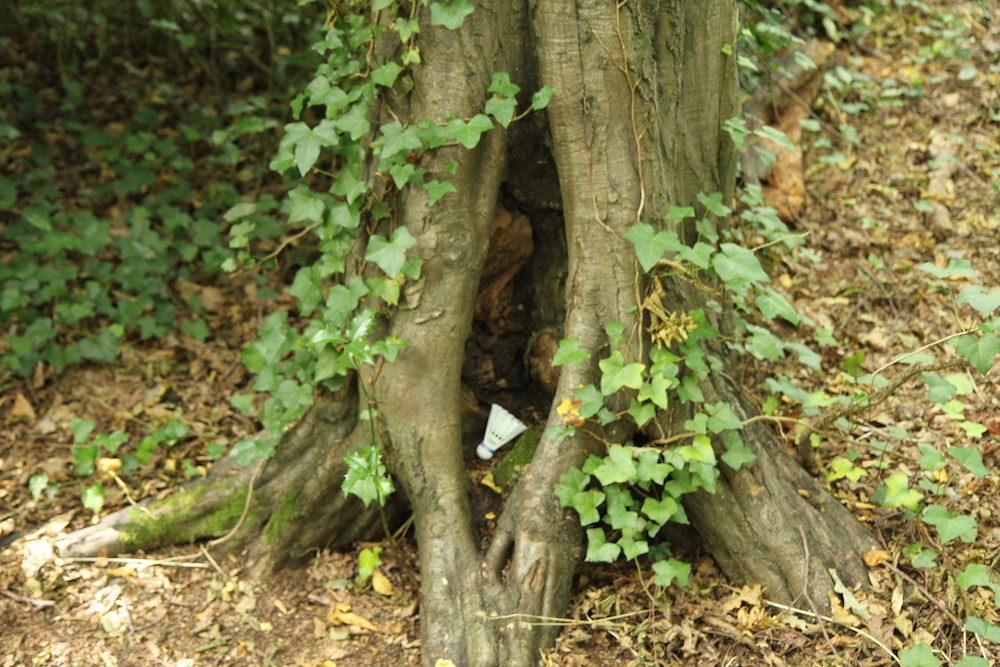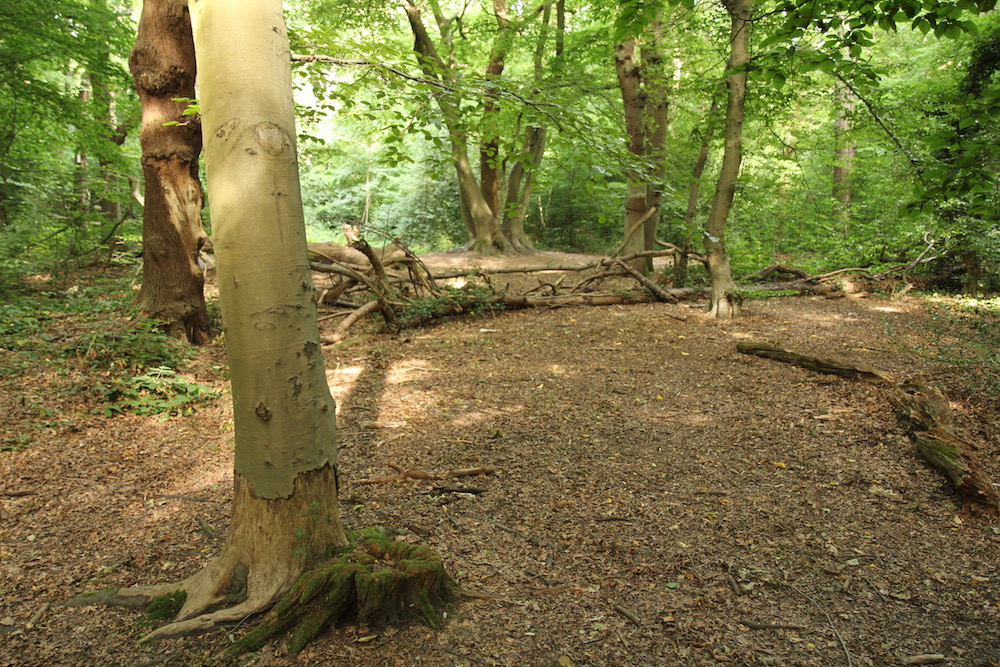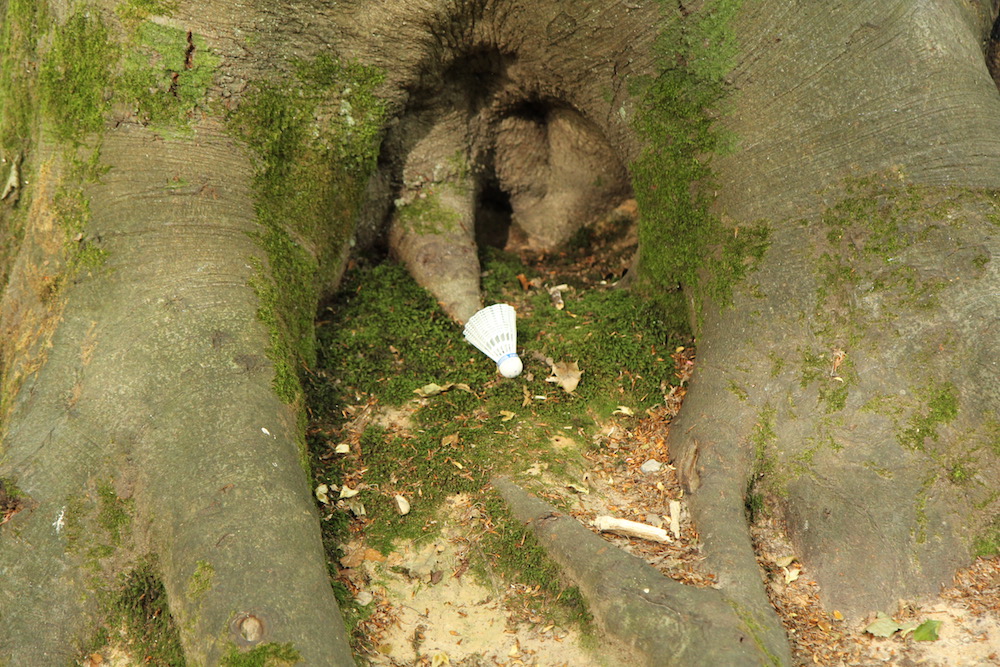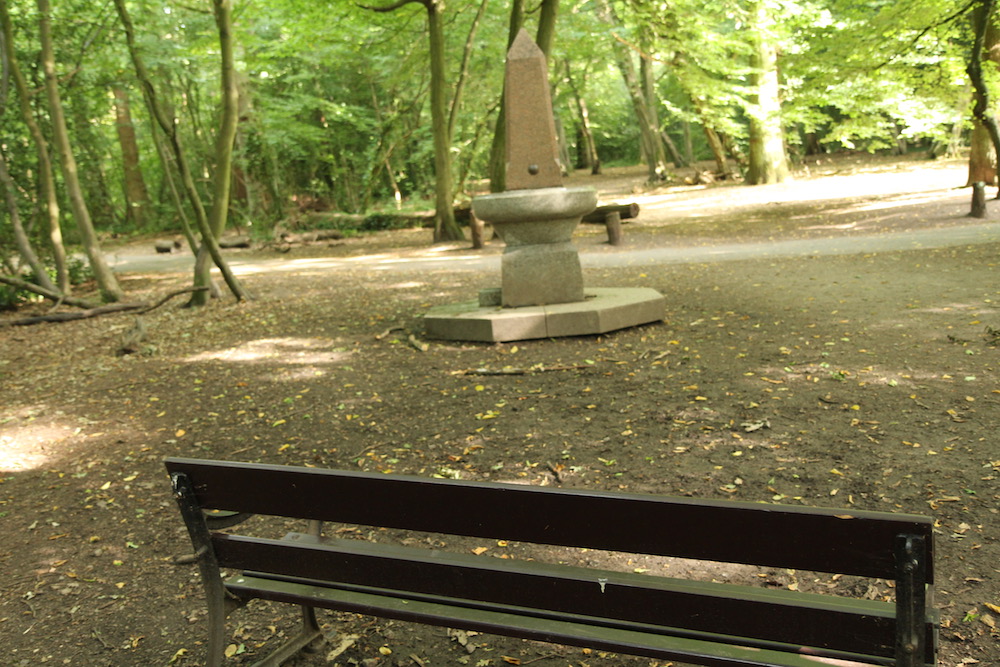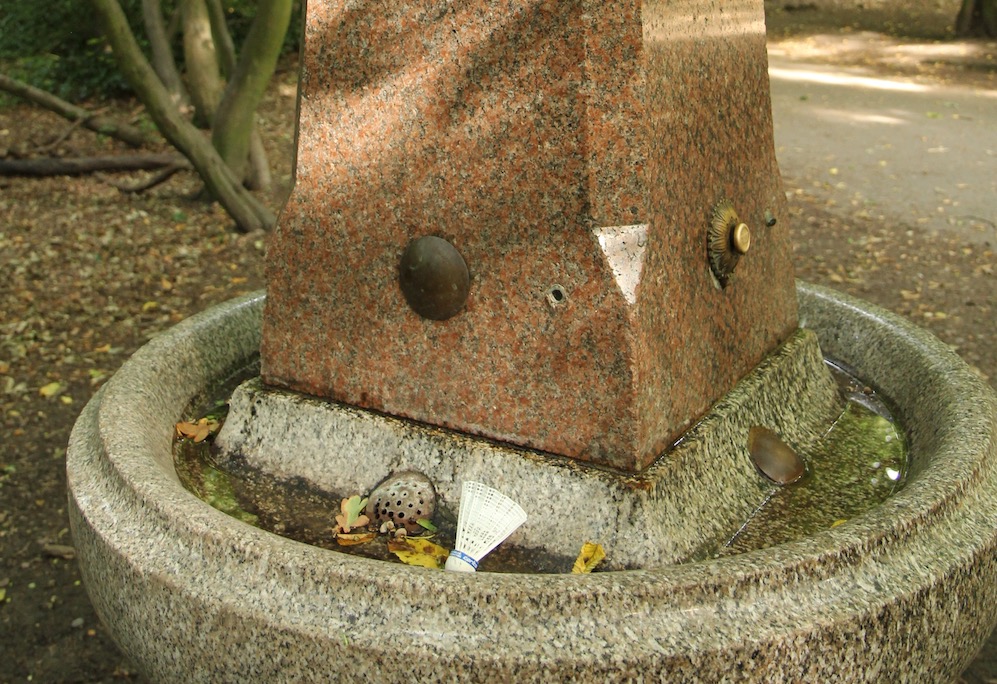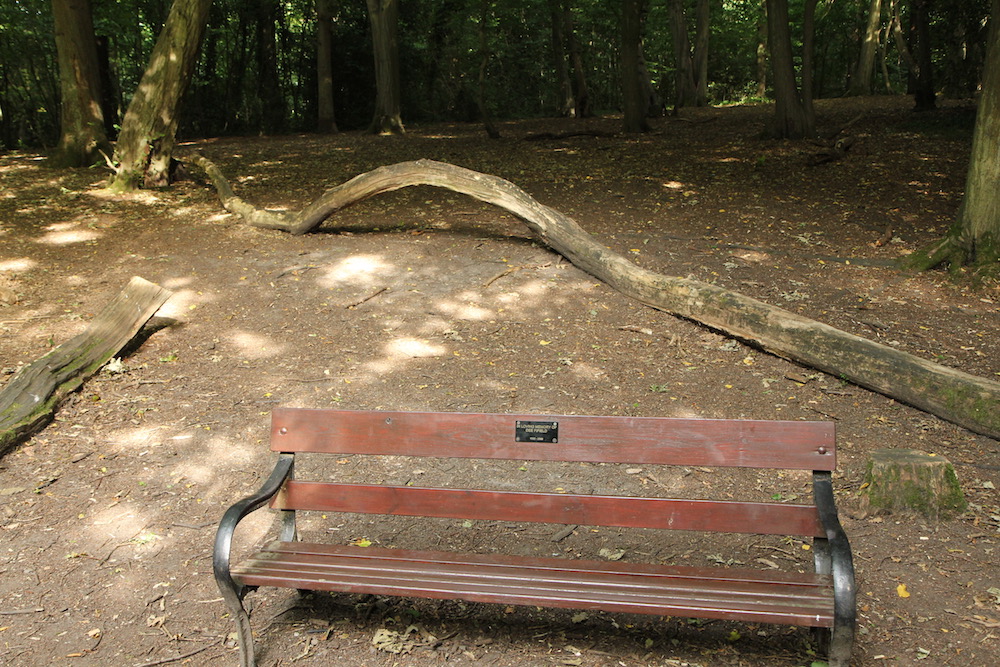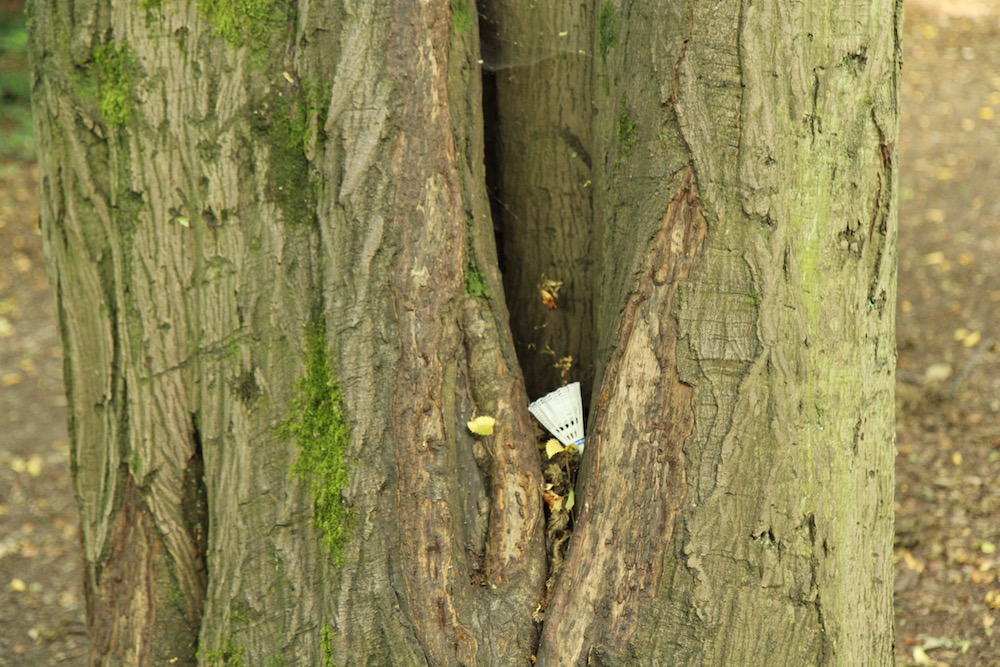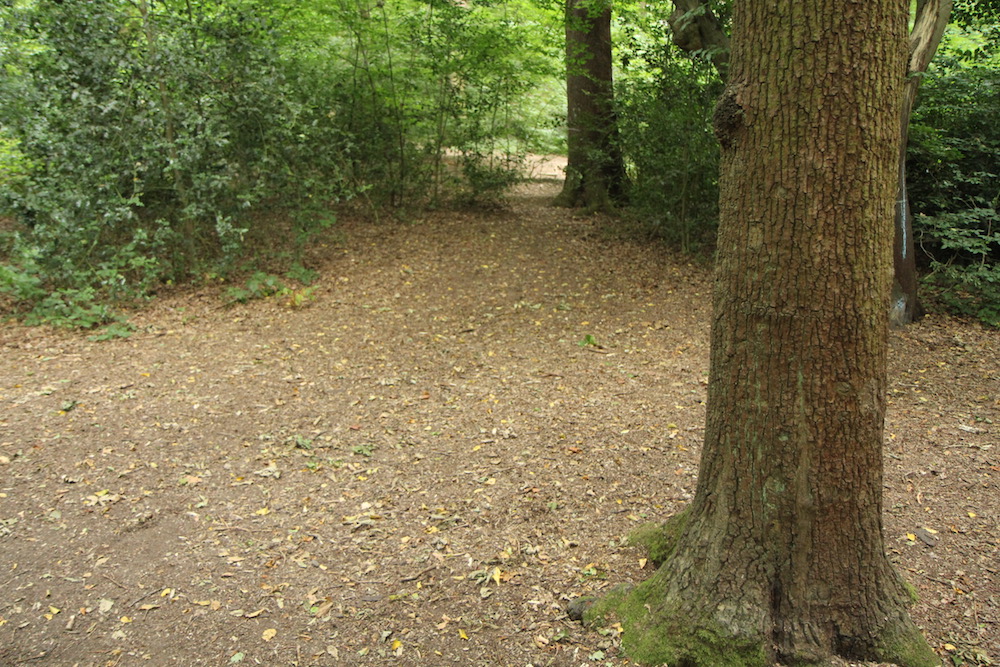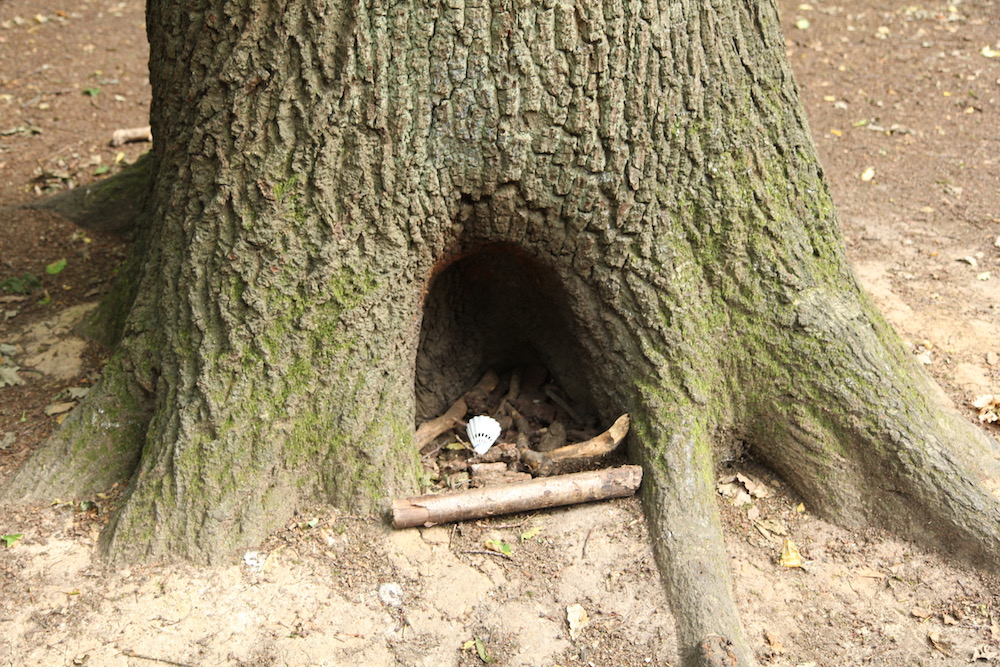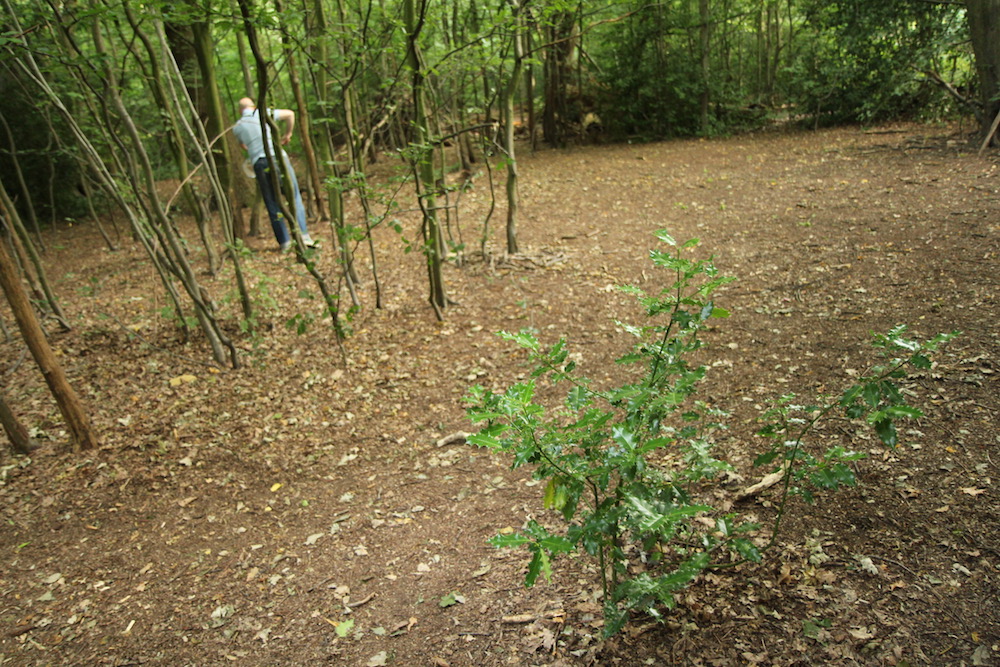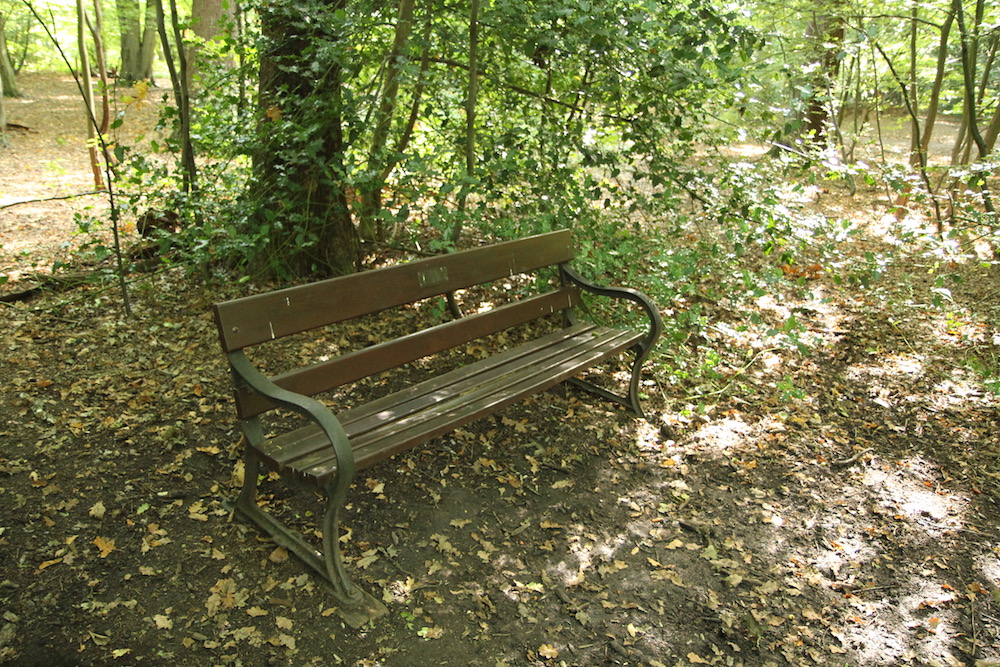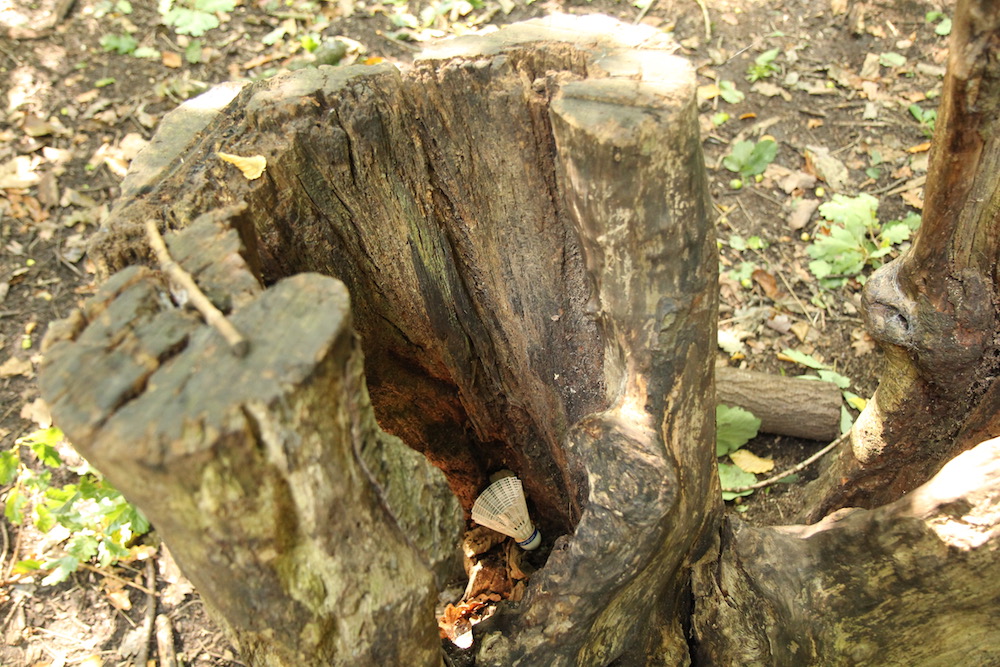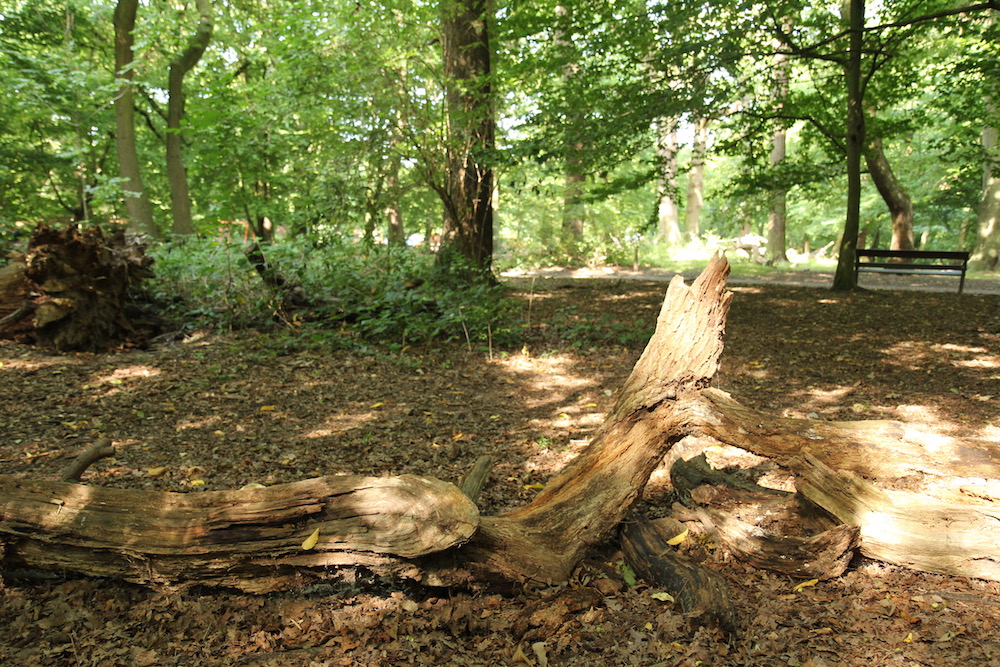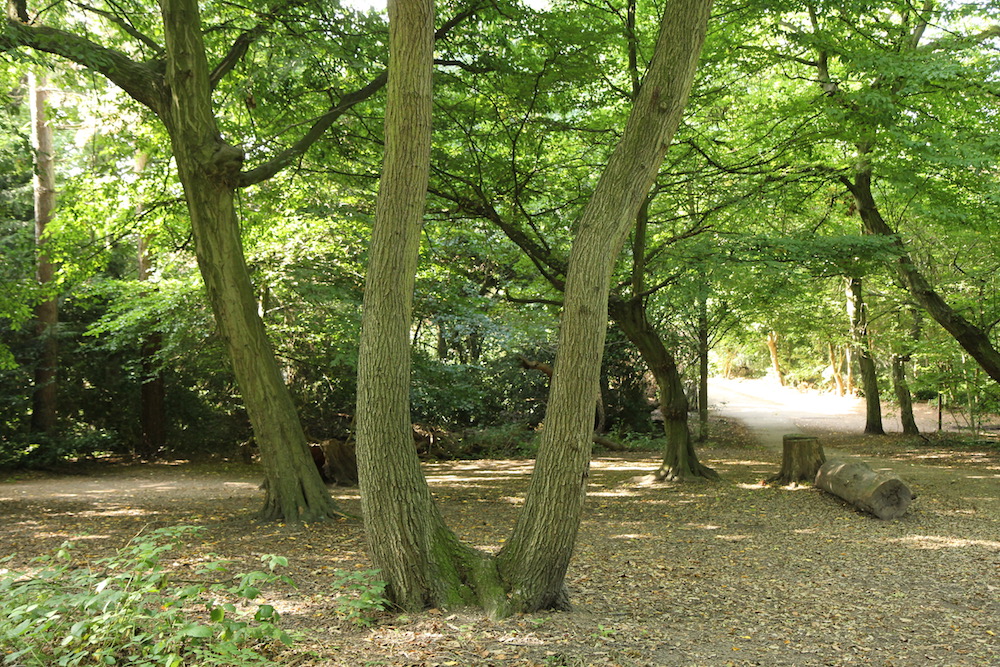Note: This is the Highgate Wood course as it was initially designed in 2017. This has changed slightly since and the updated version is at Highgate Wood
Highgate Wood is a 9-hole, par 40 course set in ancient woodland in north London. Members of the North London Golfington Club have been hard at work recreating a course that was played in this historic setting centuries ago. This page presents some history of the setting as details of the course itself.
History*
Between the 16th and 18th centuries the wood was leased to various tenants who managed it as ‘coppice with standards’. This involved regularly cutting down areas of hornbeams to a stump (which is ‘coppicing’) to encourage new growth which could be harvested for use as fuel or fencing, whilst allowing oak and other tree species to grow to maturity (known as ‘standards’). Remnants of wood banks dividing these areas can still be seen. Many of these oaks were then used by the crown to construct ships and by the church to construct buildings.
It is during this period that the keepers employed to maintain the wood and fell trees started playing golfington for entertainment, particularly in the summers when the long evenings allowed for outdoor recreation after work had finished for the day. This rural golfington setting is interesting as a contrast to those in which the landed gentry played, which were more focussed in and around their spacious houses and meticulously landscaped gardens.
In the 1880s the last tenant gave up his lease. After a campaign by the local community to stop the wood being sold for building development, it was gifted to the Corporation of London and the wood was declared “open for the use and recreation of the public for ever” on October 30th 1886.
Golfington would still have been played here occasionally after this date, but with the tradition amongst the woodkeepers lost, it slowly died out. There is little surviving physical evidence of any course layouts as hole numbers and pars were often just carved into the bark of trees near the tee area rather than using any signage. These trees from the time would have been felled long ago, taking any evidence with them. This means that reconstruction has been painstakingly carried out from written reports and maps, with adjustments for trees that have been felled or other landmarks that have been moved in the intervening centuries.
* Real non-golfington history is taken from the City of London’s web site here, which has a lot of very interesting information about the wood and its past.
Course
The course consists of nine holes and its total par is 38, which the modern player will consider higher than expected for a course of this length. Research shows that high par ratings of this sort were not unusual for these historic rural courses, although they are relatively unknown today.
For those wishing to play, a printable scorecard is available: NLGC Highgate Wood scorecard
Interactive Map
There is an interactive map available: https://golfington.com/maps/nlgc-hw
Static Map
Hole 1 “Stumped” Par 3
The is a relatively simple hole to start off. Tee off with one foot against the fence post directly behind the fir tree that obscures your view of the hole:
Aim over (or round) the fir tree and into the hole inside the stump ahead. Landing on the edge of the stump does not count. Only in the hole is in the hole.
To get to the next tee, head left on the path behind the hole and then take the first turning right, just where there is a bin. This will take you to a clearing that used to be the site of Roman pottery kilns. Turn right and walk to the edge of the clearing here to find the tee for hole 2:
Hole 2 “Corridor of Uncertainty” Par 9
Currently the highest par hole in top level golfington. It is not as long as one might assume from the par 9 rating, but it requires a balance of distance and accuracy. This takes the player down a narrow path through an area known for bluebells. Beware, the bluebells are fragile and any incursion into their growing area is out of bounds! Tee off anywhere behind the sign that explains the bluebell area:
Aim carefully down the path, avoiding the areas on the other sides of the fence. If you get caught up in the fence but does not cross it, just drop it on the path next to where it landed. Over the fence and you’ll incur a penalty stroke and need to replay the shot. Once you clear the path, turn round to the right and aim for the hole in the base of the tree there:
Once you have finished this, walk past the hole to the path. Walk to your left briefly and then take the turning to the left. You will pass a bench here on the left. When you get to the next bench on the left, walk another 40 paces and then head left off the path. You should see a tree with a mossy stump next to it that is the tee for hole 3:
Hole 3 “A day at the Beech” Par 4
This hole brings into play a magnificent multi-trunked beech, which is situated next to an ancient earthwork wall that was used to subdivide the wood centuries ago.
Tee off behind the tree with the stump next to it; either side is okay. Beware of the branches crossing the path ahead: these are out of bounds! Any shot landing here needs to be replayed it and a stroke is lost. In other words, the branches behave just as if they were a water hazard crossing the path.
Aim for the hole in the base of the large multi-trunked beech just ahead. The referee on the day should mark where the bounds of the “hole” are:
After this, head back towards the path and find the nearby intersection with the path running south. At the intersection is a water fountain and nearby is a bench, which is the tee for hole 4:
Hole 4 “1888 Erection” Par 2
An unusual chance for a hole in 1! Stand with a foot against the bench to tee off and aim for the trough around the drinking fountain:
You do need to land properly inside:
Now walk down the southward path (signposted to the café) briefly until you find a bench on the left of the path, which has a distinctive curved log lying just behind it. This is the tee for hole 5:
Hole 5 “Under the Log” Par 5
Tee off behind the bench. You need to go under the curved log just in front of the bench, so if you overshoot it then you will need to come back and through it from the correct side:
Aim for the vee in the split tree that is directly ahead:
Head back to the path and further south towards the café. Take the first left turning and pass three benches on your right. Just after the third bench, you will see a clearing on your right that has a telephone pole in it behind a tree. Head into the clearing and you will see the tee for hole 6:
Hole 6 “Keep on Cottaging” Par 4
Situated near the keeper’s cottage, this hole requires both distance and accuracy. Tee off behind the tree in the clearing:
Aim through the gap in the trees, holly and undergrowth into the next clearing and aim for the hole at the base of the tree there:
Walk past the hole a short distance and you will find yourself in a large “clearing” area clear of undergrowth. Walk directly across this to the other side and back into the woods and you will find the tee for hole 7:
Hole 7 “Woodcock Alley” Par 4
The closely spaced trees at this hole require that your shuttlecock mimic the flight of the woodcock to avoid them. You do need to play through these and not around them, so the referee will draw a line on either side to indicate an out of bounds area. Tee off behind the small holly bush:
Aim to hit the oak tree just to the left of the makeshift wooden shelter:
Walk on past the tree that served as the hole and you will see a path leading off to the left. Follow this until you find a randomly placed bench in the middle of the wood that is the tee for hole 5:
Hole 8 “Are You Grey Squirrel?” Par 5
This rather mysteriously placed bench is the tee for hole 8:
Looking directly across from the bench, behind the large tree before you, is a hollow stump over waist high. Aim to land inside this hollow trunk:
Head to the left to the path and turn right, following the path almost all the way down to the next junction. When you reach a bench on the left, turn left and find the tee for the final hole:
Hole 9 “V for Victory” Par 4
Tee off behind these logs and aim towards the impressive V-shaped tree which will be visible across the brambles a bit too the left. The brambles between here and the hole are out of bounds, so you will need to play around the right hand side of the tree ahead in order to approach the hole. If you do get tangled up in the brambles, you will receive a penalty stroke and need to retake the shot:
Once around the tree, head left and aim through the giant V:
This hole does afford the possibility of an eagle for big hitters, and a distinct birdie opportunity for everyone else. Onward to Victory!
Video Walkthrough
For a full audio-visual dip into the course second only to bashing your way around it yourself, we present:
